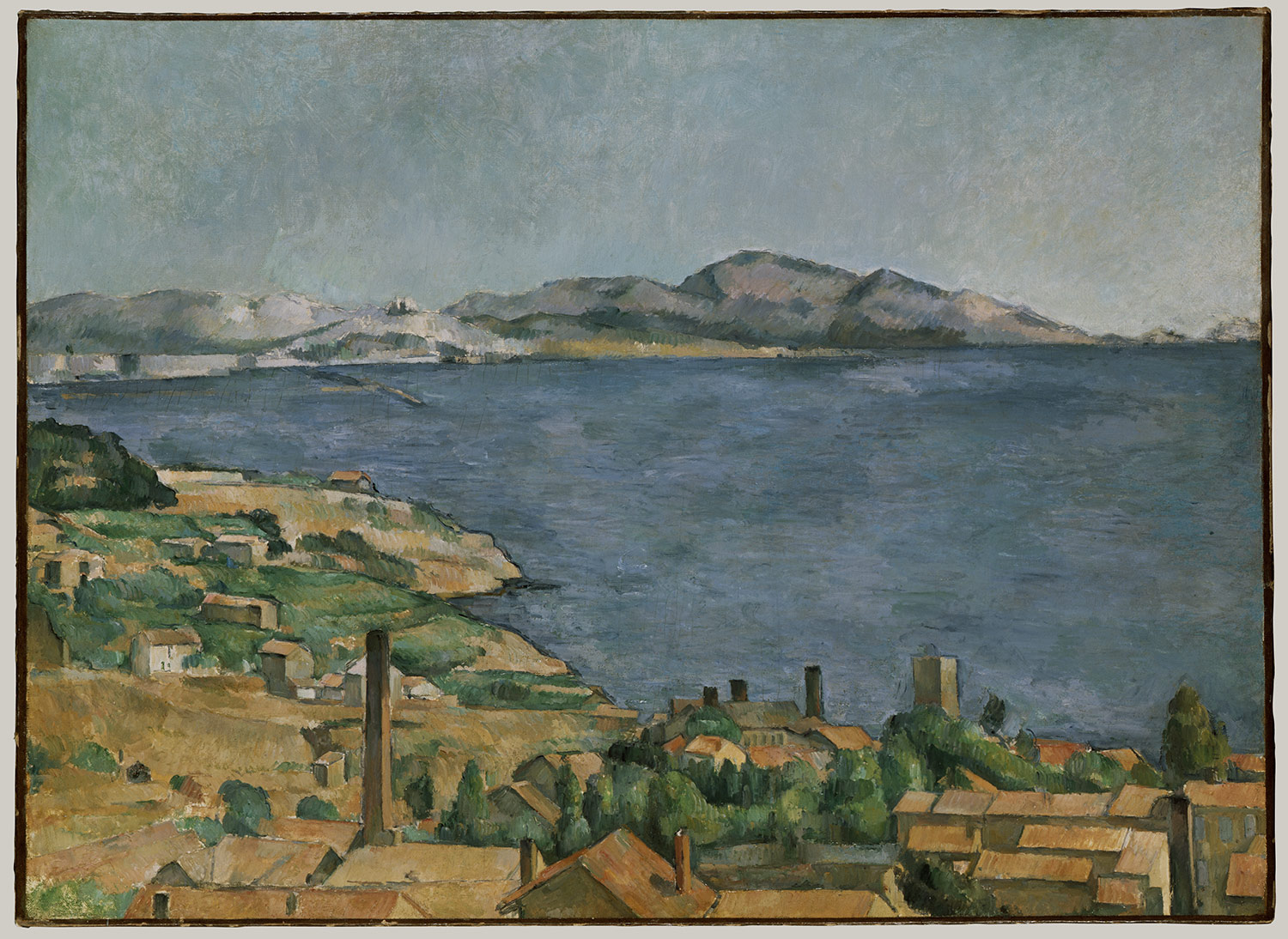Saturday, June 30, 2012
Cézanne in Provence
Cézanne in Provence--on view January 29 through May 7, 2006, in the West Building of the National Gallery of Art in Washington, and June 9 through September 17, 2006, at the newly renovated Musée Granet in Aix-en-Provence--was the principal international exhibition marking 2006 as the centenary of the death of Paul Cézanne (1839-1906). A key figure in the impressionist and post-impressionist movements, he is often seen as the father of modern art. This exhibition, by focusing on the works Cézanne painted in and around his native Aix-en-Provence, celebrated the landscape and the rich associations it had for him.
Approximately 100 of Cézanne’s greatest oil paintings and watercolors demonstrated his intense, emotional engagement with the countryside of his birthplace, where he painted some of his most compelling landscapes, penetrating portraits of family members, and the monumental Bathers from the National Gallery, London. Works depicting such scenes as Cézanne’s family home of Jas de Bouffan, Mont Sainte-Victoire, the Mediterranean coast at L’Estaque, the dramatic quarry at Bibémus, and the Château Noir will come from public and private collections throughout Europe and the United States.
The exhibition was organized by the National Gallery of Art, Washington, the Musée Granet, and the Communauté du Pays d’Aix, Aix-en-Provence, and the Réunion des musées nationaux, Paris (French National Museums Organization).
The exhibition also launched Cézanne 2006 in the United States and France, where Aix-en-Provence celebrated the centenary with numerous events, including the reopening of the Musée Granet, one of France’s top regional museums, and the opening to the public of several key sites including the Jas de Bouffan and Cézanne’s work cabin in the Bibémus quarry, as well as the famous studio at Les Lauves, newly restored to its original state.
"I was born here; I will die here." Cézanne, as recorded by a visitor, 1902
Provence nurtured the life and art of Paul Cézanne (1839–1906) like no other place. In the distinctive countryside around his native Aix-en-Provence, the pays d'Aix, he found the motifs, rich in natural beauty but also in emotive associations, that have since become synonymous with his art. Cézanne created some of his most compelling images in the solitude of Provence. They include not only landscapes painted outdoors but also portraits, still lifes, and imaginary scenes of bathers that he executed in the studios he occupied in and around Aix.
The Master of Aix, as Cézanne came to be known during his lifetime, drew on his birthplace for the inspiration that set him on his path as an artist. Throughout the sometimes arduous progression of his career, Provence—more specifically the countryside around Aix—remained a constant source of strength in his struggle to master the means of his artistic expression. Other artists had come to paint the Provençal landscape before him, but Cézanne made this corner of Provence uniquely his own, adopting motifs and views that convey a powerful sense of place.
Cézanne outside his studio at Les Lauves
photographed by Gertrude Osthaus on April 13, 1906
Photo credit: Foto Marburg/Art Resource, NY
The Artist's Father, Reading "L'Événement," 1866
oil on canvas
National Gallery of Art, Washington, Collection of Mr. and Mrs. Paul Mellon
The House of the Jas de Bouffan, c. 1874
oil on canvas
Private Collection, Courtesy of Wildenstein & Co., New York This is one of the first Provençal paintings in which Cézanne applied the bright palette and free handling he had developed in Paris with Pissarro and the impressionists during the 1870s. The work was most likely executed in the summer of 1874, soon after Cézanne had returned home from Paris. He had written his parents that he hoped his father would finance a long stay at home in Aix: "I shall be very happy to work in the South, where the views offer so many opportunities for my painting."
The Gulf of Marseille Seen from L’Estaque, c. 1885
oil on canvas
Lent by The Metropolitan Museum of Art,
H. O. Havemeyer Collection, Bequest of Mrs. H. O. Havemeyer, 1929 (29.100.67)
Many more images



